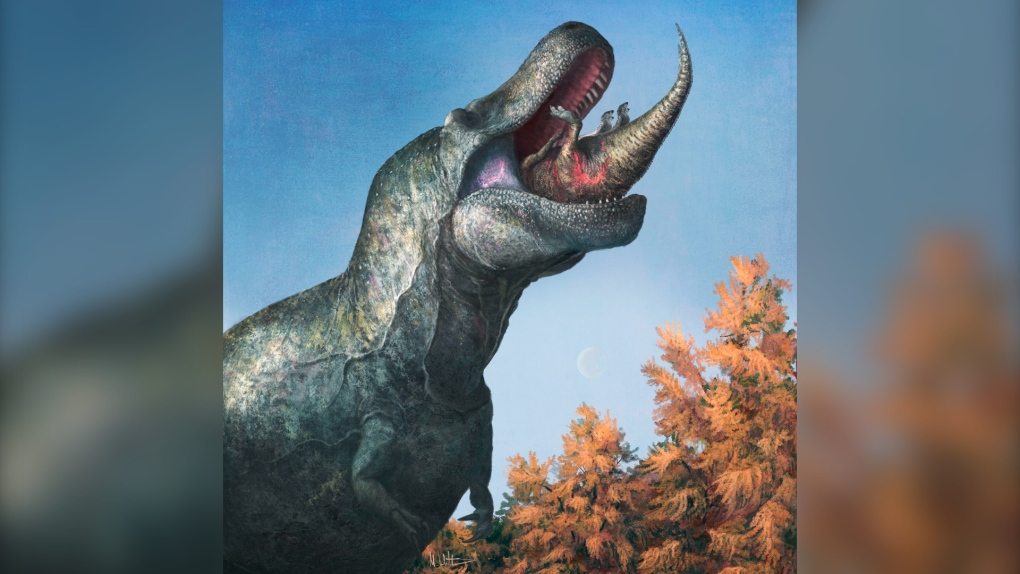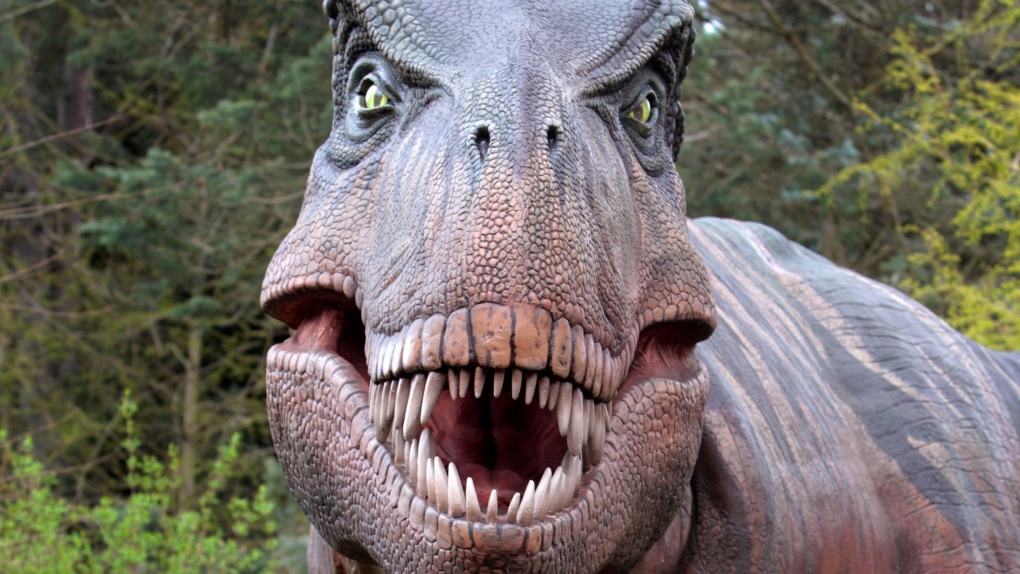NEW YORK -
The Tyrannosaurus rex is often shown baring massive, sharp teeth, like the ferocious creature in "Jurassic Park." But new research suggests that this classic image might be wrong.
The teeth on T. rex and other big theropods were likely covered by scaly lips, concludes a study published Thursday in the journal Science. The dinosaur's teeth didn't stick out when its mouth was closed, and even in a wide open bite, you might just see the tips, the scientists found.
The research is the latest in a long back-and-forth over how dinosaur mouths really looked.
Recent depictions show big teeth jutting out of the dinosaurs' jaws, even when closed. Some thought the predators' teeth were just too big to fit in their mouths, said study author Thomas Cullen, a paleontologist at Auburn University in Alabama.
When researchers compared skulls from dinosaurs and living reptiles, though, they found this wasn't the case. Some large monitor lizards actually have bigger teeth than T. rex compared to their skull size, and can still fit them under a set of scaly lips, Cullen said.
The scientists also found clues in the pattern of wear and tear on tooth surfaces.
For a creature like a crocodile, whose teeth stick out of its mouth, the exposed part gets worn down quickly -- "like someone's taken a sander to the side of the tooth," said another study author Mark Witton, a paleoartist at England's University of Portsmouth.
 This illustration provided by Mark P. Witton in March 2023 depicts a juvenile Edmontosaurus being eaten by a Tyrannosaurus rex with a lipped mouth. (Mark P. Witton via AP)
This illustration provided by Mark P. Witton in March 2023 depicts a juvenile Edmontosaurus being eaten by a Tyrannosaurus rex with a lipped mouth. (Mark P. Witton via AP)
But when researchers analyzed a tooth from a Daspletosaurus, a T. rex relative, they found it was in good condition and it didn't show that uneven damage pattern.
With this evidence and other clues from the dinosaurs' anatomy, the study makes a good case for lipped tyrannosaurs, said University of Maryland paleontologist Thomas Holtz, who was not involved with the study.
Still, "we're not talking kissy lips," he pointed out -- they'd be thin and scaly like those of the Komodo dragon, a large lizard.
It's not the first time our depictions of dinosaurs have been called into question: Other research has shown that T. rex was more hunched over than we used to think, and that fierce velociraptors probably sported feathers.
Most of what we know about dinosaurs comes from their bones, but it can be harder to get clear answers about soft tissues like skin, which usually aren't preserved as fossils.
Adding lips may make dinosaurs look a little less ferocious, but it also makes them feel more realistic, Witton said.
"You don't really see a monster," he said. "You see an animal."
 This April 28, 2011 file photo shows a Tyrannosaurus rex dinosaur replica at the Woodland Park Zoo in Seattle. (AP Photo/Elaine Thompson)
This April 28, 2011 file photo shows a Tyrannosaurus rex dinosaur replica at the Woodland Park Zoo in Seattle. (AP Photo/Elaine Thompson)
The Associated Press Health and Science Department receives support from the Howard Hughes Medical Institute's Science and Educational Media Group. The AP is solely responsible for all content








































